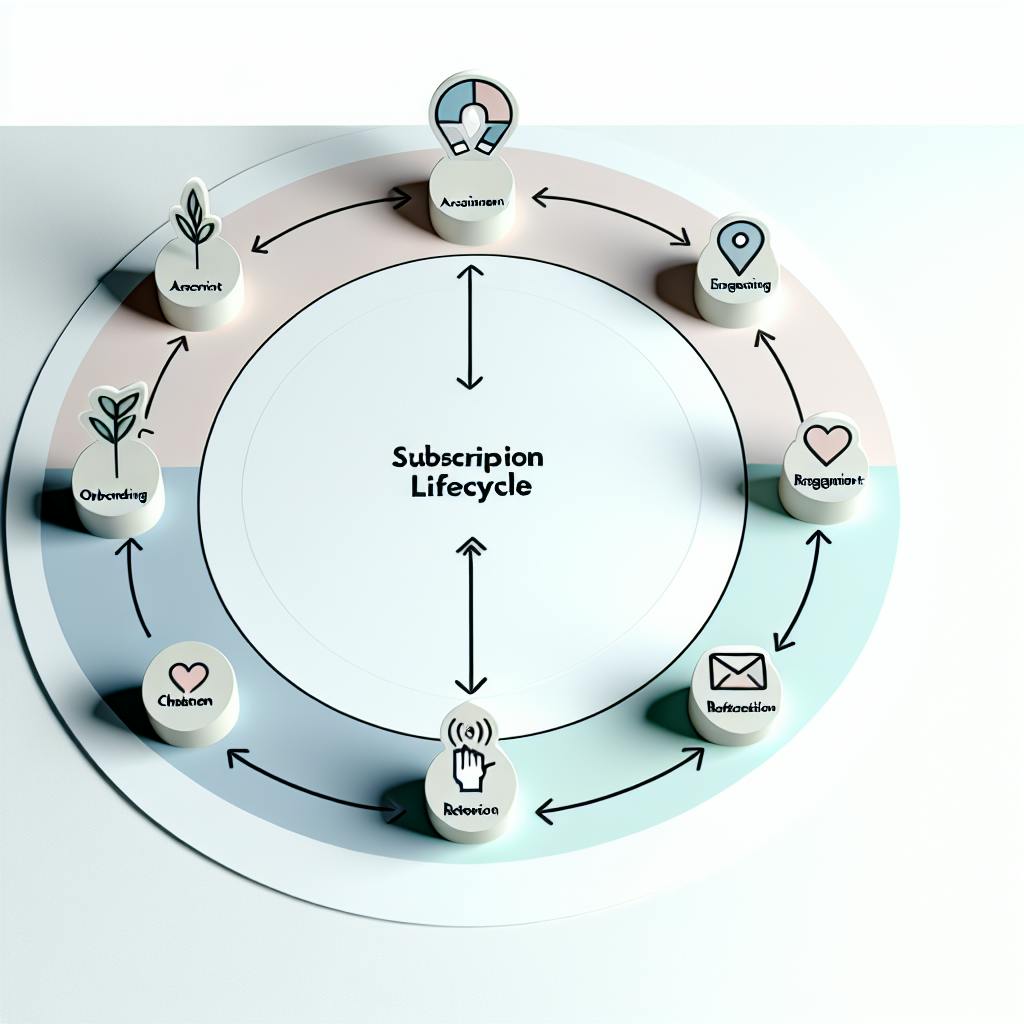Attribution models help marketers understand which channels drive conversions and desired outcomes. There are two main types:
Single-Touch Models
- First-Touch: Gives all credit to the first interaction
- Last-Touch: Gives all credit to the final interaction before conversion
Multi-Touch Models
- Linear: Distributes equal credit across all touchpoints
- Time Decay: Gives more credit to recent touchpoints
- Position-Based: Assigns credit based on touchpoint position
- Data-Driven: Uses machine learning to analyze customer behavior
Choosing the right model depends on factors like business goals, customer journey complexity, data availability, and marketing channels.
| Model | Best For |
|---|---|
| First-Touch | Identifying initial awareness channels |
| Last-Touch | Analyzing final conversion drivers |
| Linear | Evaluating overall marketing performance |
| Time Decay | Longer sales cycles, nurturing leads |
| Position-Based | Complex sales cycles, optimizing journeys |
| Data-Driven | Businesses with extensive data and resources |
Setting up attribution involves selecting a model, integrating data sources, configuring the model, and analyzing metrics like conversion value, conversion count, and return on ad spend.
Regular model reviews, combining models, and addressing challenges like data quality and touchpoint tracking are best practices for effective attribution modeling.
Related video from YouTube
The Modern Customer Journey
Today's Customer Journey
Customers today have a complex buying process. They spend a lot of time researching products and services online before making a purchase. This shift in behavior has made customers more informed and demanding. They expect a smooth and personalized experience across all touchpoints. In today's digital world, customers don't follow a linear path. Their journeys are often fragmented and non-linear.
Touchpoints and Channels
The modern customer journey involves various touchpoints and channels, such as:
- Social media
- Online search
- Chatbots
- In-store experiences
Each touchpoint is an opportunity for businesses to engage with customers, provide value, and build relationships. Understanding the role of each touchpoint is key to creating a seamless customer experience.
Factors Influencing the Journey
Several factors influence the customer journey, including:
| Factor | Description |
|---|---|
| Industry | The industry the business operates in (e.g., retail, finance, healthcare). |
| Product | The type of product or service being offered (e.g., luxury, commodity). |
| Target Audience | The demographic and characteristics of the target customer group. |
For example, a customer buying a luxury product may have a different journey than one buying a commodity product. Similarly, a customer in a specific age group or demographic may have distinct preferences and behaviors. Businesses must consider these factors when designing their customer experience strategies.
Single-Touch Attribution Models
Single-touch attribution models give full credit for a sale or conversion to either the first or last interaction in the customer journey. These models are straightforward but offer a limited view of the customer's path.
First-Touch Attribution Model
This model assigns 100% credit to the initial marketing touchpoint that introduced the customer to your brand or product, such as an ad, search result, or social media post.
Pros:
- Shows which channels drive initial awareness and interest
- Simple to understand and implement
- Useful for businesses focused on generating new leads
Cons:
- Ignores all other touchpoints that influenced the purchase
- Provides an incomplete picture of the customer journey
- May lead to overspending on initial awareness channels
Best For: Businesses with short sales cycles and a heavy focus on acquiring new customers through demand generation campaigns.
Last-Touch Attribution Model
This model gives full credit to the final marketing interaction before a purchase or conversion, like a retargeting ad, email promotion, or chat with sales.
Pros:
- Identifies channels that directly drive conversions
- Simple to set up and analyze
- Useful for optimizing bottom-funnel conversion rates
Cons:
- Disregards all other touchpoints leading up to the conversion
- Provides a narrow, conversion-focused view of the customer journey
- May undervalue nurturing and awareness channels
Best For: Businesses laser-focused on boosting immediate conversions from existing prospects through bottom-funnel tactics.
| Model | Key Pros | Key Cons | Ideal For |
|---|---|---|---|
| First-Touch | Shows demand gen channels, Simple | Incomplete journey view, May overvalue awareness | Short sales cycles, New lead focus |
| Last-Touch | Identifies conversion drivers, Easy setup | Narrow conversion focus, Undervalues nurturing | Boosting conversions from prospects |
While straightforward, single-touch models provide an incomplete picture of the modern, multi-touchpoint customer journey. For a more comprehensive view, businesses should consider multi-touch attribution models.
Multi-Touch Attribution Models
Multi-touch attribution models assign credit to multiple touchpoints in the customer journey, providing a more complete view of how different channels influence conversions.
Linear Attribution Model
The linear model gives equal credit to each touchpoint, assuming they all contribute equally to the conversion.
Pros:
- Recognizes every touchpoint's role
- Simple to understand and implement
- Suitable for straightforward sales cycles
Cons:
- Doesn't account for touchpoints' varying impact
- May lead to overspending on certain channels
- Fails to reflect the customer journey's complexity
Best For: Businesses with simple sales cycles focused on lead generation.
Time Decay Attribution Model
This model gives more credit to recent touchpoints, assuming they have a greater influence on conversions.
Pros:
- Highlights the importance of recent interactions
- Useful for longer sales cycles
- Provides insights into touchpoints driving conversions
Cons:
- May overlook early touchpoints' role in generating interest
- Doesn't fully capture the customer journey's complexity
- May lead to overspending on recent touchpoints
Best For: Businesses with longer sales cycles focused on nurturing leads.
Position-Based Attribution Models
These models assign credit based on a touchpoint's position in the journey, with varying weights for each position.
| Pros | Cons |
|---|---|
| Recognizes touchpoints' varying impact | Can be complex to implement and analyze |
| Provides a nuanced view of the journey | May require significant data and resources |
| Useful for complex sales cycles | May lead to overspending on certain channels |
Best For: Businesses with complex sales cycles focused on optimizing the customer journey.
Data-Driven Attribution Models
Custom Attribution Models
Custom attribution models allow businesses to create tailored models based on their specific goals and customer journeys. These models allocate credit to touchpoints based on objectives like lead generation, customer acquisition, or revenue growth.
Pros:
| Pros |
|---|
| Aligns with specific marketing goals and customer journeys |
| Allocates credit based on business objectives |
| Provides an accurate view of touchpoint impact |
Cons:
| Cons |
|---|
| Requires significant data and resources to develop and implement |
| Can be complex to set up and manage |
| May need ongoing maintenance and updates for accuracy |
Best For: Businesses with complex sales cycles and multiple marketing channels that require a tailored model to accurately measure touchpoint impact.
Algorithmic Attribution Models
Algorithmic attribution models use machine learning algorithms to analyze historical data and assign credit to touchpoints based on their actual influence on customer behavior. These models can identify patterns and trends in customer behavior and allocate credit accordingly.
Pros:
| Pros |
|---|
| Uses machine learning to analyze data and assign credit |
| Identifies patterns and trends in customer behavior |
| Provides an accurate view of touchpoint impact |
Cons:
| Cons |
|---|
| Requires significant data and resources to develop and implement |
| Can be complex to set up and manage |
| May need ongoing maintenance and updates for accuracy |
Best For: Businesses with large amounts of historical data and complex customer journeys that require a sophisticated model to accurately measure touchpoint impact.
sbb-itb-d1a6c90
Comparing Attribution Models
Choosing the right attribution model is key to understanding how your marketing efforts drive results. Consider these factors when evaluating models:
Key Factors
- Business goals: Pick a model aligned with your objectives, like lead generation or revenue growth.
- Customer journey complexity: For complex journeys with many touchpoints, choose a model that can handle that.
- Industry: Look at industry-specific needs that may impact the model choice.
- Data availability: Ensure you have enough data for the model to provide accurate insights.
- Marketing channels: Select a model that works with your channels, like social media or email.
Model Comparison
| Model | Pros | Cons | Best For |
|---|---|---|---|
| First-Touch | Simple, shows initial awareness channels | Ignores other touchpoints, oversimplifies journey | Identifying channels driving initial brand awareness |
| Last-Touch | Easy to understand, highlights conversion drivers | Disregards preceding touchpoints, oversimplifies journey | Analyzing final touchpoints driving conversions |
| Linear | Gives equal credit to all touchpoints | Oversimplifies journey, ignores varying touchpoint impact | Evaluating overall marketing performance, finding areas to improve |
| Time Decay | Weights recent touchpoints, reflects customer behavior | Can be complex, may overlook early touchpoints | Analyzing customer behavior, optimizing campaigns |
| Position-Based | Balances early and late touchpoints, reflects journey | Can be complex, may miss mid-funnel touchpoints | Evaluating multi-touch campaigns, identifying key touchpoints |
| Data-Driven | Uses machine learning, reflects actual customer behavior | Requires extensive data, can be complex | Analyzing complex journeys, optimizing marketing strategies |
| Custom | Tailored to business goals and customer journeys | Requires resources, can be complex | Businesses with complex sales cycles and multiple channels |
Setting Up Attribution Models
Setting up attribution models helps you understand how your marketing efforts drive results. There are various tools and platforms to choose from.
Tools and Platforms
Popular options for setting up attribution models include:
- Google Analytics 4: Offers advanced attribution features like a conversion paths report.
- Third-party tools: Tools like Windsor.ai and Matomo Cloud provide robust attribution modeling capabilities.
- Custom solutions: You can build your own attribution model using Python.
Configuration Steps
To set up an attribution model, follow these steps:
- Choose a model: Pick a model that fits your business goals and customer journey.
- Set up data: Ensure you have enough data by integrating marketing channels and setting up conversion tracking.
- Configure the model: Follow the tool's guidelines to configure your attribution model.
- Test and refine: Test the model and refine it as needed for accurate results.
Analyzing Attribution Data
Analyzing attribution data helps you understand the effectiveness of your marketing efforts. Key metrics to focus on include:
| Metric | Description |
|---|---|
| Conversion Value | Total value of conversions attributed to each channel |
| Conversion Count | Number of conversions attributed to each channel |
| Return on Ad Spend (ROAS) | Revenue generated by each channel compared to advertising cost |
Use these metrics to identify areas for improvement and optimize your marketing strategies.
CountVisits for Attribution Modeling

CountVisits is a tool that offers lifetime use without monthly subscriptions. Its features include:
- Easy setup: Simple configuration process.
- Accurate tracking: Reliable tracking of website visits and conversions.
- Customizable reports: Generate reports tailored to your business needs.
CountVisits is an excellent choice for those seeking a hassle-free attribution modeling solution.
Best Practices and Considerations
Regular Model Review
Regularly reviewing and adjusting your attribution models is crucial. As your marketing strategies and customer journeys change, your models must adapt. Schedule regular reviews to keep your models relevant and accurate.
Combining Attribution Models
Using multiple attribution models can provide a better understanding of your customer journey. By combining models, you can identify where each model excels and gain insights into how your marketing efforts drive results.
Challenges and Solutions
Attribution modeling has challenges, including:
| Challenge | Solution |
|---|---|
| Data quality issues | Ensure data sources are clean, reliable, and consistent. |
| Touchpoint tracking | Implement AdTech solutions that recognize users across devices and channels. |
| Non-marketing factors | Consider external factors like seasonality, economic trends, or competitor activity when interpreting attribution data. |
| Resource constraints | Prioritize data governance, integration, and cross-device tracking. |
1. Data quality issues
Inaccurate or incomplete data can lead to misattribution. To address this, ensure your data sources are clean, reliable, and consistent.
2. Touchpoint tracking
Accurately tracking touchpoints across devices and channels can be challenging. To overcome this, implement AdTech solutions that recognize users based on identifying factors like email addresses, matching IDs, or cookies.
3. Non-marketing factors
External factors like seasonality, economic trends, or competitor activity can impact attribution. When interpreting attribution data, consider these non-marketing factors.
4. Resource constraints
Limited resources can hinder attribution modeling efforts. To address this, prioritize data governance, integration, and cross-device tracking.
Conclusion
Key Points
In this guide, we explored attribution models - frameworks that help determine which marketing channels contribute to desired outcomes like sales or conversions. Here are the key points:
- Understanding the customer journey and identifying touchpoints that drive conversions is crucial
- Choose the right attribution model for your business, whether single-touch, multi-touch, or data-driven
- Regularly review and adjust attribution models to ensure accuracy and relevance
- Combine attribution models to gain a comprehensive understanding of marketing efforts
- Address common challenges like data quality issues, touchpoint tracking, and resource constraints
Why Attribution Modeling Matters
Attribution modeling is vital for optimizing marketing efforts, allocating resources effectively, and driving revenue growth. In today's digital landscape with complex customer journeys, it provides a data-driven approach to understanding customer behavior and preferences.
The Future
As technology evolves and customer journeys become more complex, attribution modeling will play an even more critical role. Future trends include:
| Trend | Description |
|---|---|
| AI-powered models | Models that use AI to analyze data and provide accurate insights |
| Cross-device tracking | Increased importance of tracking users across devices |
| Integration | Integration with other marketing technologies like customer data platforms |
| Data governance | Growing need for data quality control in attribution modeling |
FAQs
How do I choose an attribution model?
When selecting an attribution model, consider your sales process and marketing channels. Pick a model that aligns with your goals. For example, if you want to boost lead generation, a first-touch model may be suitable. But if you have a complex customer journey, a multi-touch model could provide better insights. Analyze your data and communicate any limitations.
What attribution model works best for ecommerce?
For ecommerce with few marketing channels, a simple last-touch or first-touch model may suffice. However, if your customer journey involves multiple touchpoints, consider a multi-touch model to better understand each channel's impact.
Is data-driven attribution better?
Data-driven attribution uses machine learning to analyze conversion data across all touchpoints, providing a more accurate view of the customer's path. Unlike last-click models, it assigns credit to all interactions leading to a conversion.
What's the difference between data-driven attribution and last-click in Google Ads?
Data-driven attribution spreads conversion credit across all search ads in the customer journey, while last-click attribution only gives credit to the final search ad clicked before conversion.
How does a multi-touch attribution model work?
A multi-touch attribution model accounts for all touchpoints in the customer journey and assigns a portion of the conversion credit to each channel. This allows you to see the value of each interaction in driving conversions.


